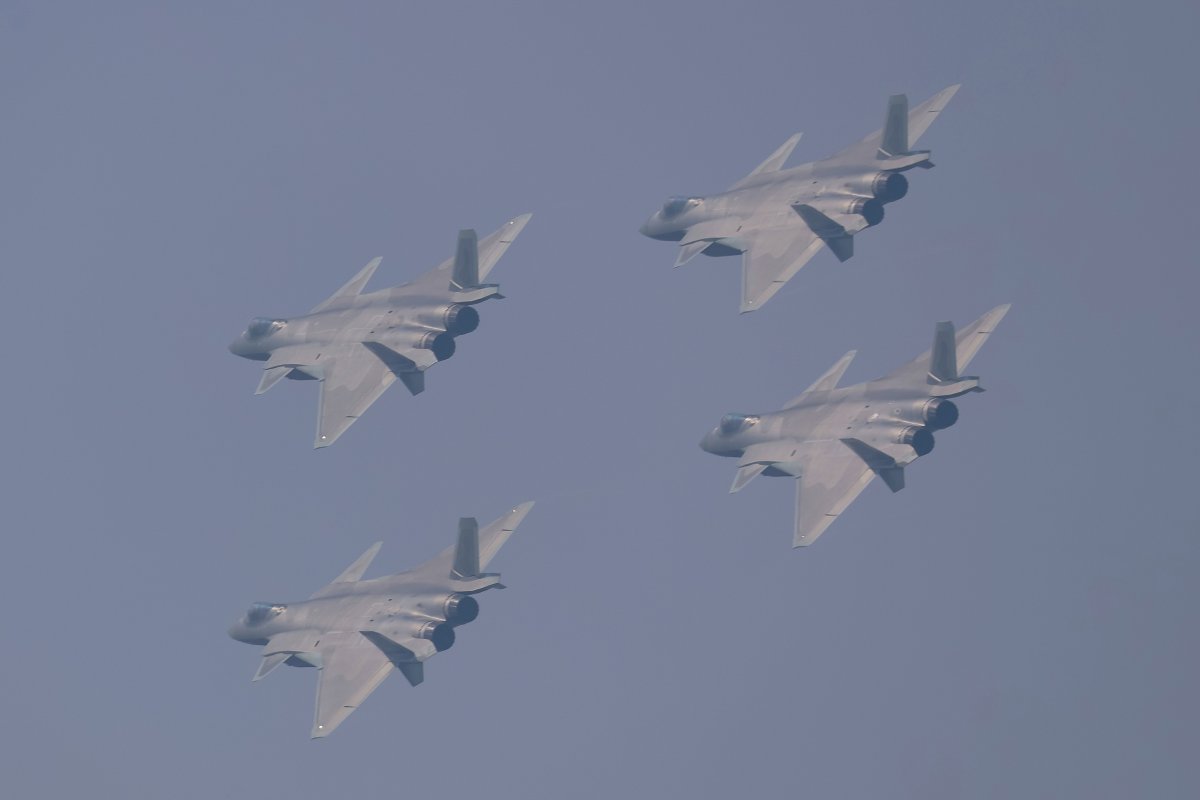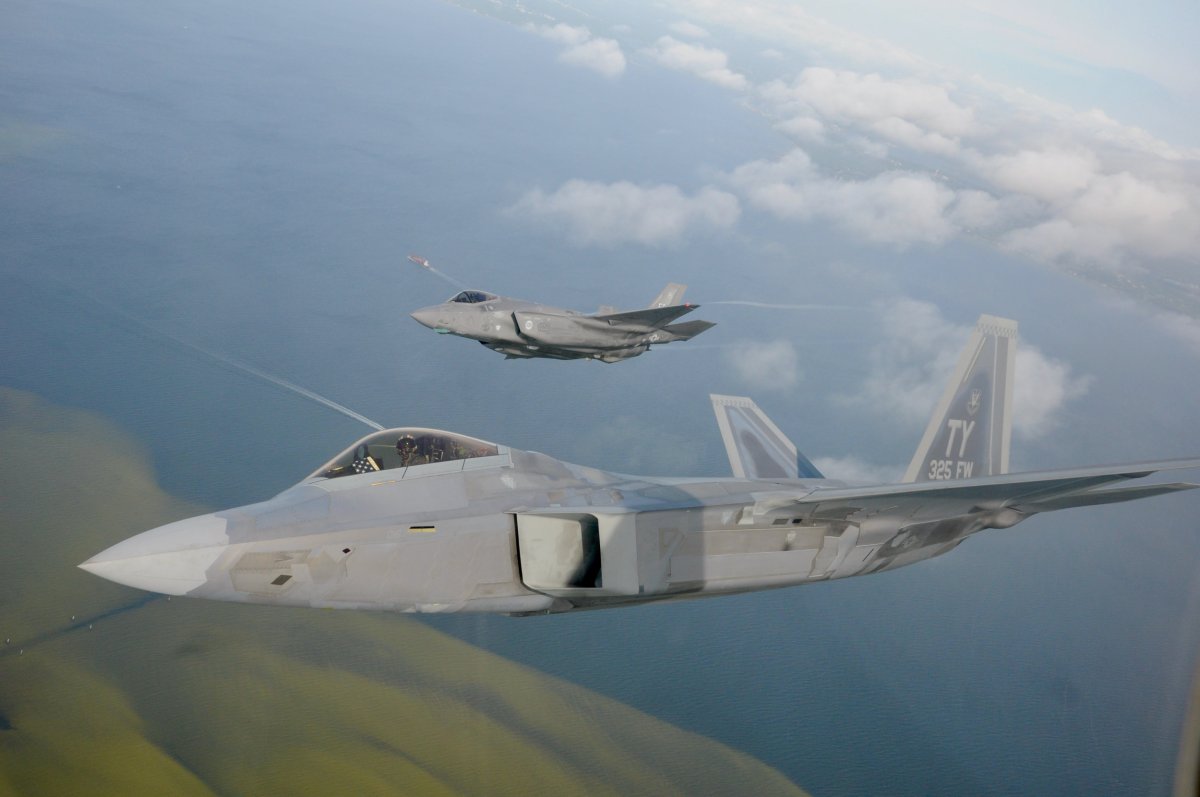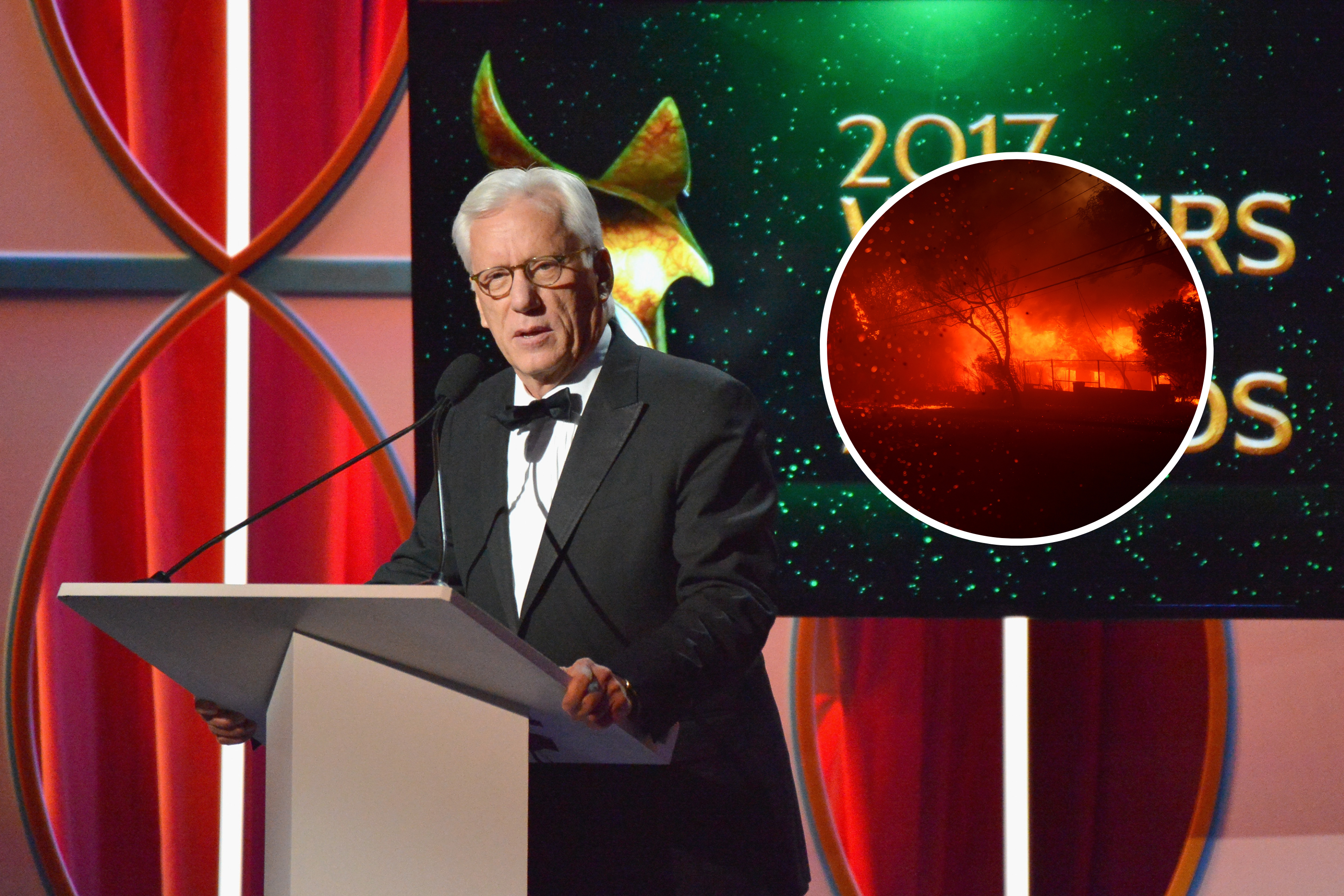The United States and China are racing to field their next-generation, or the so-called "sixth-generation," fighter aircraft, which are designed to be superior to the most advanced combat jets that are currently in service with both nations, experts have told Newsweek.
Newsweek has emailed the Pentagon and the Chinese Defense Ministry for comment.
Why It Matters
China, the pacing challenge for the U.S. military, "unofficially" unveiled two new combat aircraft prototypes last month. The Chinese military currently operates one type of fifth-generation fighter jet, the J-20—its most advanced combat aircraft so far.
Meanwhile, the U.S. Air Force told Newsweek that the Next Generation Air Dominance fighter jet, which is intended to be the successor of its fifth-generation stealth fighter jet, the F-22, which has been in service since the early 2000s, continued its development.
Besides the fighter jet, the U.S. Air Force is currently testing its next-generation bomber, the B-21, which is marketed by its manufacturer, Northrop Grumman, as "the world's first sixth-generation aircraft to reach the skies," incorporating further technological advances.
What To Know

"The definition of a six-gen fighter is a little squishy, no matter the country," said Clayton Swope, the deputy director of the Aerospace Security Project and a senior fellow in the Defense and Security Department at the Center for Strategic and International Studies.
For the U.S. and China, their sixth-generation fighters are intended to be better than the fifth-generation—the F-22 and J-20. "It would probably have significantly better stealth, networking and computing, sensing, and engines than its predecessors," Swope added.
David Cenciotti, the editor of The Aviationist, said there is no universal consensus on what defines the fighter jet generations, "either globally or even among Western nations," so it is more accurate to refer to the next generation of aircraft as simply the "next-generation."
The next-generation fighter jet will incorporate a range of potential design characteristics, said Cenciotti, including being capable of piloted, remote-controlled, or AI-controlled missions, as well as advanced low observability, making it close to invisible to detection.
Bill Sweetman, veteran aerospace journalist and former industry executive, said the next logical step in manned combat aircraft is to combine what he called "all-aspect stealth," meaning it is less visible to radar from its front, side, and rear, with supersonic speed and maneuver. "But this is hard to do, and the result gets large and expensive," he added.
While there is no officially agreed-upon classification of fighter jet generations, Kitsch Liao, the associate director of the Atlantic Council's Global China Hub, said China's own classification of fighter jet generation differs a bit from those of the Western and Russian classification.
China "skipped" the Western third generation due to its split with the Soviets, which had provided the previous two generations, during the Cold War, according to Liao. The J-20 was initially referred to as the fourth generation, which, in fact, is comparable to the F-22.
Meanwhile, China is developing different fighter jet airframe models at a rapid pace, as opposed to the more integrated and modular approach adopted by the West. "But either way, comparing 'generations' is a somewhat dangerous simplification," said Liao.
What People Are Saying

Clayton Swope: "Analysts are only speculating that the two advanced aircraft seen in [China] in late December would be classified as sixth-generation jets. But the aircraft clearly exhibit sophisticated, cutting-edge designs."
Kitsch Liao: "I wanted to stress the issue with the generation moniker because as time goes by, capabilities seemed to blend between generations ... this situation would only become more complex and confusing in the future should the 'generation' moniker persists."
David Cenciotti: "When it comes to 6th gen, the definition is even murkier, with buzzwords like 'AI' being thrown around to stake a claim."
Bill Sweetman: "Generations are confusing and not always helpful. Nobody talked about them before the 1990s, and the Russians were the first to use the idea seriously. But then the 'fifth-generation' term was picked up by Lockheed Martin [U.S. defense contractor] as a marketing tool, to portray anything other than the F-22 and F-35 as obsolete."
What Happens Next
It remains to be seen which country, the U.S. or China, will complete its development of the next-generation fighter jet and put it into service first. It is likely that both nations will accelerate their respective programs in the new year as part of the overall U.S.-China competition.
.png)



















 English (US) ·
English (US) ·